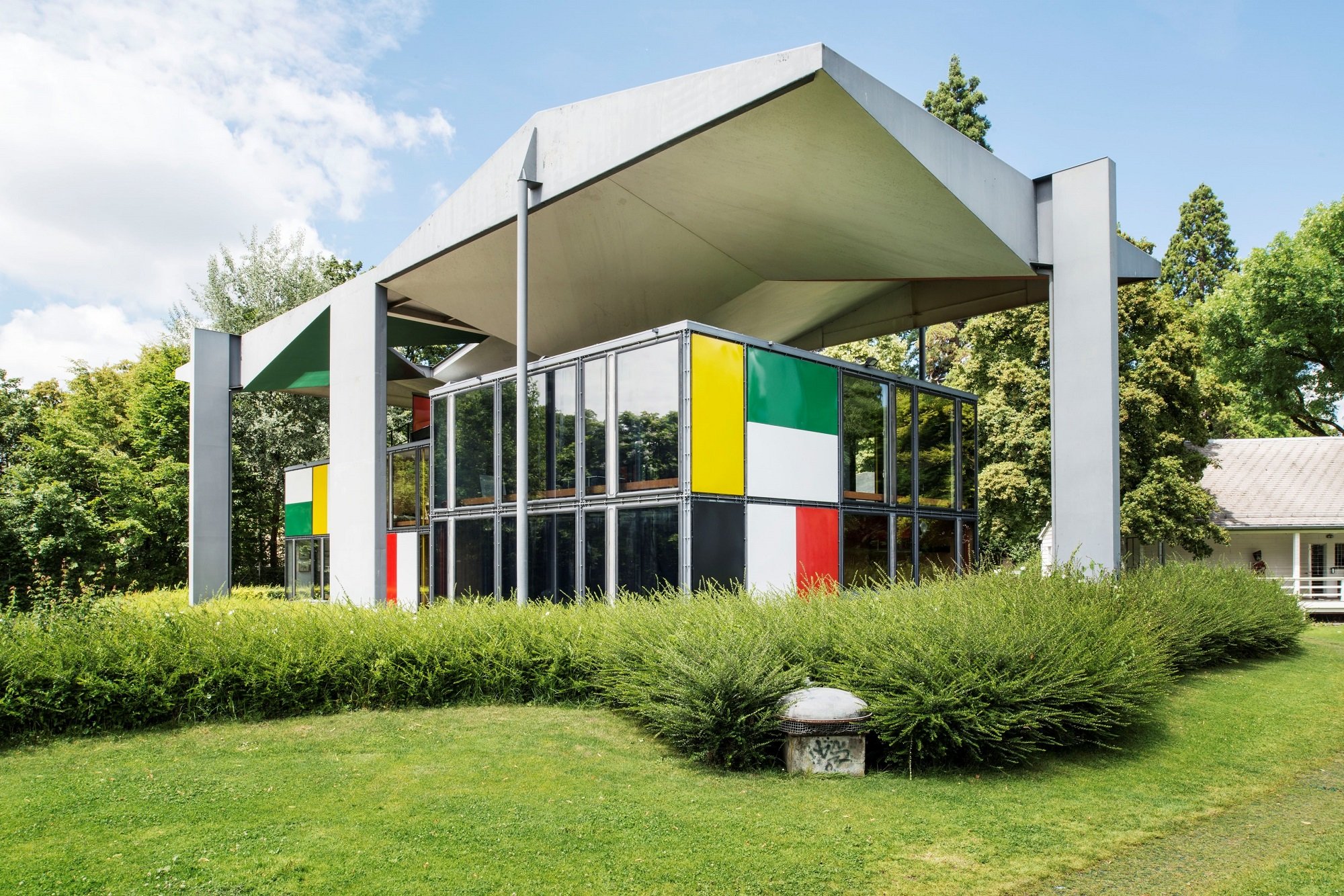#11593. Modernist Pavilion with Mondrian-Style Colored Facade
The image shows an outstanding example of modernist architecture, reminiscent of the famous "Le Corbusier Pavilion." The building features a distinctive geometric structure with an expressive color composition in the neoplasticism style, reminiscent of Piet Mondrian's works.
The pavilion's facade is designed as a grid of metal profiles filled with colored panels – green, yellow, red, white, and black. This color scheme creates a vivid contrast with the surrounding greenery and emphasizes the geometric structure of the building. The upper part of the structure is a massive canopy with a flat roof that appears to float above the glass volume of the first floor, giving the construction lightness and dynamism.
Particularly notable is the use of the "free facade" principle – one of Le Corbusier's five points of modern architecture, where external walls are freed from their load-bearing function, allowing the facade to be freely organized with glass and colored panels. The large glazed area ensures maximum connection between the interior space and the surrounding nature.
This approach to facade design can be adapted for a private home by using color accents to highlight individual structural elements, skillfully combining solid and glazed surfaces, and applying contrasting materials to create visual interest. Even a small inclusion of bright geometric elements can give a standard facade individuality and artistic expressiveness.
